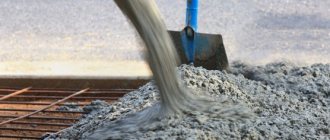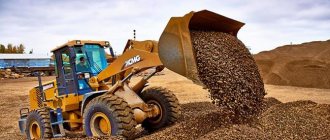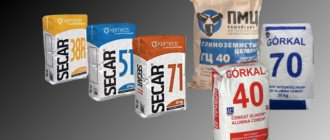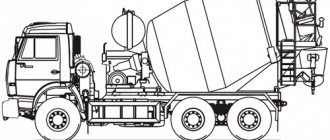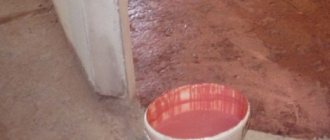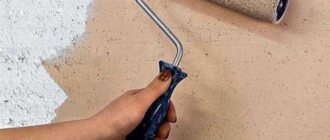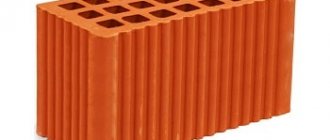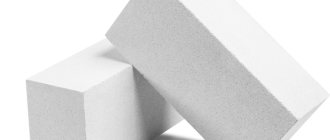Improvements in the technological processes by which concrete is produced have made it possible to begin the production of a new material. This is expanded clay concrete, its composition differs from conventional materials. Expanded clay concrete is considered lightweight, maintaining the quality characteristics of concrete products. The low thermal conductivity makes it possible to use the composition for arranging walls. To produce expanded clay concrete of different densities, it is necessary to know the proportions of plasticizers, with the help of which elasticity is created, and other ingredients that influence the main indicators.
Compound
Every specialist knows that to prepare expanded clay concrete the following components will be required:
- cement mass;
- washed sand;
- finely dispersed expanded clay, for the production of which natural raw materials were used;
- clean water that does not contain technical impurities.
Waste water with a pH less than 4 is not suitable for the recipe for making expanded clay concrete. The same applies to sea water, when a white coating forms on the surface.
In addition to the indicated components, it is allowed to use sawdust of wood material, ash, and plasticizer additives to prepare dry expanded clay concrete mixture.
Precise selection of expanded clay concrete composition is carried out directly on the construction site. Here there are certain recommendations with the help of which effective porous expanded clay concrete is obtained:
- elasticity is increased through the use of quartz sand;
- In order for the structure to perfectly withstand the effects of moisture, expanded clay gravel must be added to the mortar mass;
- M400 cement is a good binder that does not contain plasticizers;
- cement improves the characteristics of the block material, but here it is necessary to take into account that the volumetric mass of the mixture may increase;
- if heat treatment of the blocks is planned, it is necessary to use an alite cement composition.
Speaking about the size of expanded clay concrete:
- It is recommended to add expanded clay of large fractions to a composition with a moderate density. This type of concrete with expanded clay retains heat well;
- When constructing a supporting structure, fine-grained expanded clay is used.
Small expanded clay granules will give the material more weight. To get the “golden mean”, it is recommended to use a mixture of large and small stones.
Conclusions:
The results of the tests showed:
- The tested foam concrete blocks do not correspond to the declared strength grade M35 and concrete class B2.5.
- Aerated concrete blocks have been tested and comply with the declared grade M35 and class B2.5; they can be used as a structural and thermal insulation material for low buildings.
- The strength grade of thickened and solid expanded clay concrete blocks M75 for four-slot and M100 for solid blocks was confirmed. Concrete class B5 and B7.5, respectively.
Take a look at the video if you want to see how the compressive strength of the wall blocks was tested:
Expanded clay concrete is an affordable wall material with good technical characteristics. Many panel houses were built using it. Its popularity, both in Russia and in European countries, is caused precisely by its advantages.
Characteristics of expanded clay concrete and its brand
The main characteristics include the brand and density of the material. The indicators are complex and depend on the composition of expanded clay concrete and the fractions of the feedstock. Each brand is used for its intended purpose:
- M50 - used when pouring partitions in a house or arranging a load-bearing wall;
- M75 – load-bearing structures are manufactured in residential and industrial premises. In this case, monolithic technology is used;
- M100 - the properties are such that the material is excellent for filling screeds;
- M150 – used in the manufacture of blocks;
- M200 (v15) - block material and lightweight flooring options are prepared from this composition;
- M300 - used in the construction of bridges and roads.
Based on density, the material is divided into three groups:
1. Sandless - gravel, water and cement composition are used for production; sand is not added. The main advantage is reasonable cost. Application in construction - used in the construction of walls, floors and ceilings in low-rise buildings.
2. Porous - blocks are made from M20 solution. Based on strength, there are three subtypes of expanded clay concrete:
- thermal insulation – d400 – d700 – used as additional insulation for walls;
- body-insulating and structural – from d800 to d1 400, used for insulation or when laying partitions;
- wall – d1 400 – d2 000, various engineering structures are made from it.
3. Dense - contains an increased amount of cement composition, combining the characteristics of sandless and porous compositions. The price of the material is high; it is rarely used in the construction industry.
There is another option for classifying the composite composition - by volumetric mass. According to this criterion, expanded clay concrete is divided into three groups:
- heavy - strength indicator is 25 MPa, volumetric weight is 1,200 - 1,400 kg per cubic meter;
- light - weight is 800 - 1,000 kg, the composition contains lightweight expanded clay material with a low specific gravity;
- especially light - the weight of one cube is from 600 to 1,800 kg, the strength is 7.5 - 40 MPa. As a filler, instead of crushed stone, you can add expanded clay, ash gravel, and slag pumice to concrete.
Strength tests of solid expanded clay concrete blocks
But we were pleased that the dial hand almost crept up to the end of the marking.
It's time to find out whether the fact that the mass of the blocks was lower than the usual 20 kg affected the strength grade.
Production technology
How to make expanded clay concrete with your own hands? To do this, you should follow certain tips:
- the preparation of expanded clay concrete is carried out in a concrete mixer;
- when mixing, all components are supplied in strict sequence - water, cement composition, sand and only after that - expanded clay;
- to increase the compressive strength of expanded clay concrete, it is recommended to use reinforcement;
- A mixture where the cement mass completely covers each filler granule is considered to be of high quality;
- the time of one batch is no more than seven minutes. If this condition is not met, then the characteristics of expanded clay concrete will not meet the requirements of the certificate of conformity. It is recommended to stop the concrete mixer at the moment when the consistency of the mixture resembles sour cream, without containing lumps.
To check readiness, scoop the mixture with a shovel. A quickly blurred slide indicates low quality material.
Testing the compressive strength of expanded clay concrete blocks
Our blocks did not qualify for the 35th grade, but for the 75th. The corresponding concrete class is B5. You can see for yourself that the numbers say that only one block out of three reaches more than 100% of the declared brand.
BUT! During testing, to confirm the strength grade, a spread of indicators is allowed within 14.5%. In human terms, for a block to correspond to grade 75, its compressive strength must be at least 65 kgf/cm².
Advantages and disadvantages
First, let's look at the positive aspects of the material:
- the ratio of thermal conductivity and strength index is the main advantage of the material. As follows from the passport for expanded clay concrete, in terms of heat retention it is practically not inferior to lightweight aerated concrete, but its strength is much higher;
- It is possible to independently produce the material. Expanded clay concrete is a composition that does not require large financial costs at the preparation stage. Is it possible to use expanded clay instead of crushed stone in concrete? In certain situations, yes;
- price is another important advantage, no comments are required on this, since it is very acceptable;
- thermal conductivity of floors – this material has almost no equal in this regard;
- long operational period;
- environmental safety of the material;
- light weight.
There are still quite a lot of advantages in expanded clay concrete, but there is a need to remind you of its disadvantages. Builders note the following disadvantages:
- water permeability. The airiness of expanded clay concrete promotes the active absorption of moisture, which has a destructive effect. This feature limits the use of expanded clay concrete. Simply put, external walls made of expanded clay concrete will lose all their advantages, and there will be complete disadvantages. Here a mandatory condition must be met - the exclusion of water from entering the surface of expanded clay concrete.
- the need for additional insulation. Although the material has a good thermal conductivity, in most regions it is not used as an independent insulation material. As a rule, load-bearing walls on the outside require an additional insulating layer;
- disadvantages of expanded clay concrete products. They do not have ideal geometric parameters, which makes it impossible to make seams when laying tonics, thereby increasing the likelihood of “cold bridges”. But the minus is corrected if the walls are additionally insulated;
- unfair attitude of manufacturers. It has already been noted that the production of expanded clay concrete does not require large financial costs. This is often used by artisanal producers without caring about the final quality of the product.
Advantages of expanded clay concrete in private construction
1. The ratio of thermal conductivity and strength for walls.
This is one of the main advantages of expanded clay concrete, due to which it is used everywhere in construction.
In terms of thermal conductivity, it is not much inferior to such lightweight concrete as aerated concrete, for example, but at the same time, the strength of expanded clay concrete is much higher, which allows it to be safely used as load-bearing warm walls in low-rise construction.
2. DIY cooking
Expanded clay concrete can be easily and fairly well prepared with your own hands, and at the same time, used without expensive tools and installations, unlike, for example, aerated concrete (meaning high-quality aerated concrete). To prepare it, you may only need a concrete mixer, and if necessary, you can do without it. This is also one of the main advantages of this material.
Another equally important quality that can be added to the advantage of expanded clay concrete. Naturally, this means in relation to similar modern materials. I will even say more - this is one of the cheapest building materials for its application.
Disadvantages of expanded clay concrete
At first glance, with so many advantages, it seems that such a material can have practically no disadvantages, but this is far from the case. All its disadvantages mainly relate to the scope of its application, and although it is wide, but, as mentioned earlier, it has its limits. We'll talk about this further.
Expanded clay concrete, due to its “airiness,” absorbs moisture very well, which is destructive to it, which is why its use is limited only to places isolated from external aggressive environments.
In other words, expanded clay concrete is not used outdoors in an open form, unlike heavy concrete, it is in no way suitable for foundations or plinths that are constantly in an aggressive environment, various kinds of street paths, etc. Even when using expanded clay concrete as a wall material, it is necessary to prevent direct contact with external moisture.
Perhaps this is the main disadvantage of expanded clay concrete, which can cover up many of its positive qualities, but if you use it for its intended purpose, adhere to the technology, and arrange for sufficient waterproofing of this material, then this disadvantage can be reduced to nothing.
2. Additional insulation.
Despite the fact that expanded clay concrete has relatively good thermal insulation, it is not suitable for the main and only method of insulation in many regions. When using it in walls, it is necessary to take care of additional insulation of the walls from the outside, and this will entail additional costs.
3. Expanded clay concrete products.
Expanded clay concrete products, as a rule, are not ideal in size, which does not allow thin seams to be made between them. And any seam, as you know, is a bridge for cold, and the thicker the seam, the larger the bridge. But this disadvantage can be very easily corrected by additional insulation of the walls, usually with cotton insulation.
4. Unscrupulous manufacturers
As mentioned above, the production of expanded clay concrete, as well as expanded clay concrete products, does not require huge financial costs, and this is often used by “handicraft” manufacturers who, in order to reduce production costs, do not adhere to technology, as a result of which quality suffers.
Is it possible to use expanded clay concrete in building a house?
Even despite all the disadvantages, and despite the fact that today the construction market is overflowing with various kinds of modern materials, expanded clay concrete and expanded clay concrete products do not lose their popularity.
First of all, this is due to the fact that “new” materials do not always satisfy all the necessary conditions, and most often they have one particular advantage, either warm, or durable, or cheap, or environmentally friendly.
Expanded clay concrete has averaged all these qualities, which makes it a fairly universal material. With strict adherence to technology, it is not only possible, but in most cases it is necessary to use it in modern construction of private houses.
One of the most important parameters of building structural materials is their strength. It varies depending on the type of concrete. Let's consider the main parameters that affect this indicator for expanded clay concrete and products made from it.
Main types of expanded clay concrete and their features
This type of material belongs to the group of lightweight porous concrete. Its production is standardized by GOST 25820-2014, which is valid from January 1, 2020.
The main components of this material are:
- The binder is cement.
- Fillers – expanded clay gravel or crushed stone, expanded perlite sand.
- Various additives that regulate the properties of expanded clay concrete.
Depending on the filler, a distinction is made between lightweight expanded clay concrete and expanded clay perlite concrete.
Based on physical and technical properties and purpose, the following types of expanded clay concrete are distinguished:
If the density kg/m3 is known, expanded clay concrete is not difficult to determine to a certain type according to its intended use.
The main parameters for various types of expanded clay concrete are:
- Material class for compressive strength - B or, for thermal insulation materials, compressive density grade - M;
- Tensile class along the Bt axis;
- Bending tensile class Btb;
- Material grade for medium density - D.
Strength tests of gas silicate blocks
In fact, this is a normal phenomenon when working with the press. That's what it's designed for.
The pressure on the block stops when the strength limit is reached, that is, when the sample cracks, this moment is recorded on the dial. The value that the arrow points to is the force that was required for the block to crack. Some blocks split more, some crack slightly.
It can be stated with confidence that aerated concrete corresponds to the declared concrete class indicators - B 2.5; The density of the block is D 500, and the strength grade is M 35; this grade is suitable for a one- or two-story house with light wooden floors.
GOST 31359-2007 looks at it like this:
4.8. Cellular concrete, depending on the purpose, should be:
- thermal insulation: compressive strength class not lower than B0.35, average density grade – not higher than D400;
- structural and thermal insulation: compressive strength class not lower than B1.5, average density grade – not higher than D700;
- structural: compressive strength class not lower than B3.5, medium density grade – D700 and higher.
In general, if you use aerated concrete as a structural and thermal insulation material, then this brand should be enough for you. But, for the load-bearing walls of the house, you need at least a block of class B3.5, which corresponds to the M50 brand. These samples, although they showed compliance of the actual brand with the declared one, can only serve as a structural and thermal insulation material.
Strength of concrete
The most important characteristic of any concrete is its compressive strength. The greatest importance is given to this indicator for the structural type.
Concrete class B is necessarily assigned according to the design of the expanded clay concrete structure or product during its production. The numerical value after B indicates the value in MPa.
To determine such characteristics, the material is tested in the form of cylinder, cube or prism samples. The beginning of the destruction process is recorded from the moment cracks appear at the contact areas of the cement stone and aggregate granules. They develop along compression forces.
The characteristic under consideration directly depends on the density of expanded clay concrete. The larger it is, the stronger the material.
The volumetric weight of expanded clay concrete depends on the density:
- Cement;
- Expanded clay crushed stone or gravel;
- Sand.
As well as the proportions of all components that make up the mixture. Naturally, the indicator for expanded clay concrete blocks also depends on the volumetric weight of the raw materials.
The density of the aggregate depends on the degree of its porosity.
Strength tests of foam concrete blocks
For testing, three control samples of each building material were prepared to calculate the average strength value.
Before installing the foam concrete block on a hydraulic press, we weighed each sample and measured the parameters - this data will be useful for calculations.
The samples were numbered in the most trivial way. In the photo there is a foam concrete stone number one.
The weight of foam concrete stone with microfiber is 7,350 grams; dimensions 29.4x19.0x18.5 cm.
The second sample after testing can serve as an illustration for a film about ancient monuments destroyed during wars and under the influence of time.
The weight of the second sample of foam concrete stone with microfiber is 7,370 grams; dimensions: 29.4×19.2×18.7 cm.
The leftmost column indicates the declared strength grade and class of concrete. On the right is the actual strength of the block. Percentages indicate how much the actual strength corresponds to the expected strength.
In general, to put it bluntly, foam concrete stones do not correspond to the already modest M35 brand. With this result, these samples can only be branded with strength grade M15 and class B1.
Filler for expanded clay concrete
Based on the properties of the initial raw materials, the additives used and the characteristics of the technological production, various types of expanded clay aggregate are obtained:
They can have different parameters:
- Ultralight - bulk density no more than 250 kg/m3.
- Lightweight aggregates with a density of less than 450 kg/m3.
- Particularly strong - 5.5 MPa to 8 MPa with a density of more than 800 kg/m3.
Ceramic sand is the least porous of the fillers, it is the smallest in size and, accordingly, its strength is higher than all other types. When producing sand-based expanded clay concrete mixture, the blocks and panels obtained from it can be used for structural building systems.
Crushed stone with average parameters is the basis of structural and thermal insulating concrete.
Large expanded clay gravel with a high degree of porosity is used for the production of thermal insulation products for which there are no special requirements.
Cement
An increase in the proportion of cement leads to an increase in the considered values. However, this simultaneously increases its volumetric weight. Based on the purpose of the products, the concrete composition is selected according to the average level of concrete characteristics in accordance with GOST 27006-86 “Concrete. Rules for selecting the squad."
In order to prepare expanded clay concrete mortar with your own hands, you need to correctly select the proportions of the main components. This photo will help with this.
Axial tensile strength of lightweight expanded clay concrete
To determine the value of the axial tensile characteristic, samples in the shape of a cylinder, prism or figure eight with a cross section of 15 cm x 15 cm are tested. Class Bt is mandatory, assigned only when this parameter is of primary importance and is controlled at the production stage.
The number after the letter designation accordingly guarantees the stability of expanded clay concrete blocks and other products under axial tension in MPa. Classes for axial tension of expanded clay concrete: Bt 0.8; Bt 1.2; Bt 1.6; Bt 2.0; Bt 2.4; Bt 2.8; Bt 3.2.
Basic rules for strength control
At production enterprises, it is mandatory to monitor the strength of expanded clay concrete and products made from it. In construction site conditions, such a procedure is necessary during concreting of monolithic systems. Instructions for control - GOST 18105-86.
Control is carried out for monolithic systems using two methods:
- Ultrasonic;
- Tear-off method with chipping.
The tensile and compressive strength of individual concrete elements is determined using individual samples.
High-strength expanded clay concrete
Expanded clay concrete - density 800 kg/m3 is a high-strength lightweight concrete. The scope of application of this material is not limited to the use of load-bearing buildings and structures.
High-strength expanded clay gravel for concrete is widely used for the production of expanded clay - road expanded clay. This is one of the varieties of expanded clay that has increased resistance to compression and tension. On its basis, very high-quality building material for road surface construction is obtained.
Many advantages of expanded clay concrete products are clearly visible in comparison with other building materials. The table shows a comparison of blocks made from expanded clay with similar building materials.
The choice of expanded clay concrete with the necessary characteristics (the main one is the compressive strength of expanded clay concrete) depends on the scope of application of products made from it. The price of this building material most often varies, depending on its quality. More useful information can be obtained from the video in this article.
